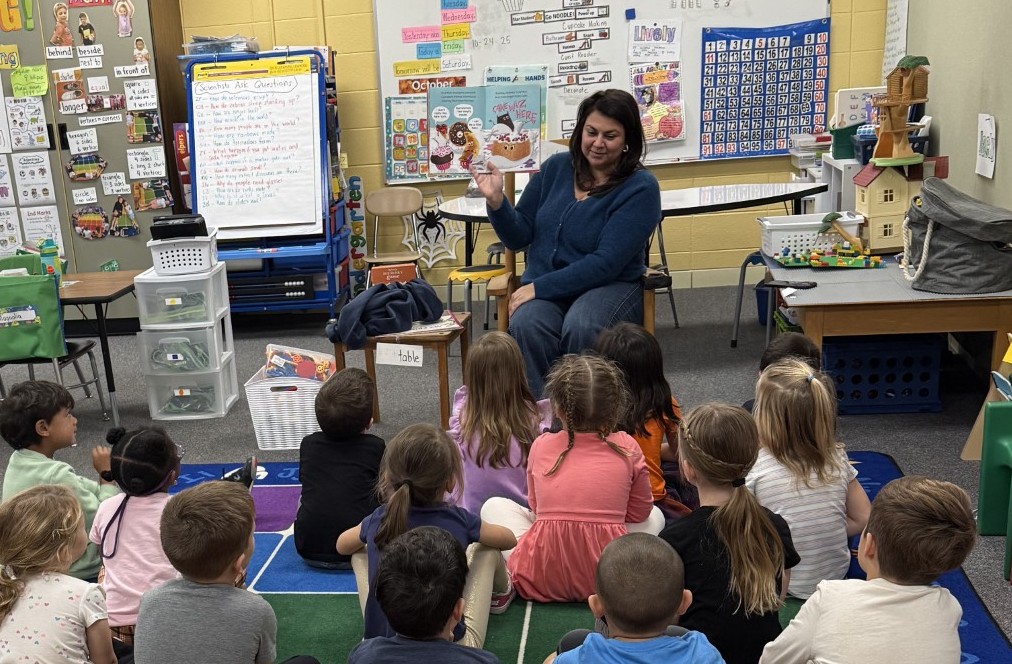How to Integrate AI Policies Into Professional Development Programs
INNOVATIVE LEADER AWARD - Providing an emphasized outlook on professional development in regards to technology and, more specifically, artificial intelligence

Professional development and student/teacher protections are always the cornerstones of whatever technology is introduced to a school, and making sure these tools are implemented well can lead to technological success for a school district.
Callie Salaymeh, Instructional Technology Coach and Biology teacher at Lyons Township High School and Head of Community for Enlightened AI, discusses how her district implemented a successful professional development plan that integrates AI guidelines to help students effectively navigate AI use personally and professionally.
Salaymeh was recently recognized for the Best Example of Professional Development at a Tech & Learning Regional Leadership Summit with an Innovative Leader Award.
Making Professional Development a Team Effort
Technology is only as good as the hands that wield it. For educational technology to be used in the right way, proper instruction is key for teachers. Professional development in this area is critical when helping teachers introduce technology to their students.
Salaymeh introduced her method of PD that helps keep the district on the edge of modern technology.
“There are five of us technology coaches for a staff of 280 teachers and about 500 faculty members total,” Salaymeh says. “We are a single school district split up into two campuses. So as technology coaches, we’re involved in a lot of the professional development for our district. We bring in a lot of technology. We go out, educate ourselves at conferences or on our own. We bring technology initiatives to our director of technology. We also provide support and coaching for our staff on how they can better implement technology in their curriculum."
Salaymeh has always been very into cutting-edge technology.
Tools and ideas to transform education. Sign up below.
“When generative AI hit the tech space, I was fascinated by it,” says Salaymeh. “The first time I started being clued in to all of that was August 2023. I quickly joined a Slack community formed by Amanda Bickerstaff, cofounder of AI In Education.”
Within this Slack community, Salaymeh was able to learn much more about AI and how it was being used. Through her interactions with AI tech leaders and educators, she was able to collaborate with her team of tech coaches to develop a comprehensive PD session based around AI. This session not only helped to educate staff on AI, it led to increased tech literacy among teachers as well.
Leveraging Information Into AI Guidelines
Having a wealth of knowledge in technology at your fingertips can turn into helpful tools for the future. In Salaymeh’s case, this information became the guidelines that the schools in the district use for proper AI use in curriculum development.
“The whole last semester of spring 2024, my focus was increasing AI literacy among staff,” says Salaymeh. “As the semester rolled on, it became obvious that having some sort of guidelines for this coming school year was important. A lot of schools were working on that last spring and I didn’t want to be behind in that initiative. So I proposed that we start a task force for AI. We used a lot of different resources from TeachAI and AI for Education, and put together the stop light guidelines. which we introduced in August of 2024.”
The stop light guidelines help let teachers know whether to utilize AI in any given assignment.
The Stop Light Guidelines
- Green Light: A green light assignment gives a student the ability to use generative AI to complete a project.
- Yellow Light: A yellow light assignment gives a student limited use to use generative AI at the teacher's discretion. This can mean using some AI tools while not using others. (For example, only using image generation AI tools but not ChatGPT to gather information.)
- Red Light: A red light assignment bars the use of generative AI to complete the project.
How to Create Forward Progress in Education for AI
The discussion of AI has been varied based on who you speak to. Many schools and districts want to begin implementing AI into their curriculum (or find better ways to do that than they already have been) but are unsure how to proceed.
Salaymeh shares the following recommendations on what schools should focus on to support their staff on the safe and effective use of AI.
“I think the starting point is to focus on the way that AI can make teachers more efficient,” she says. “Have a better work-life balance. A lot of people are leaving the teaching profession because they are being run down and overworked. Using AI as a tool to not only help [teachers] become more efficient but also eliminate some administrative tasks is a great angle for a school district to start at.”
AI literacy is also a crucial component to the effective use of AI in schools.
“The goal of increasing AI literacy is an important thing I learned early on,” says Salaymeh. “How [AI] is used in their jobs, what is myth and what is fact. Everything they can learn about AI to trust in it and know how to use it appropriately. The AI literacy of staff is really important. Once that’s there, a school district could move into introducing it to students appropriately and supporting their use of it. But those guidelines need to be in place.”
AI literacy is important, especially for teachers. More and more, AI-integrated tools are becoming available and teachers will need to understand not only how best to use these, but also how best to educate their students on how to use these. AI will only become more important going forward, and developing a working knowledge of it now can help create smooth educational transitions into the future.
One final thing that Salaymeh recommends when creating AI guidelines is to include students in the process.
“I think [school districts] need to include students in the discussion," she says. "Students need to have a seat at the table.”
Callie Salaymeh’s Tech Toolbox:
- ChatGPT
- MagicSchool
- Brisk
- EnlightenAI

Michael Millington is a senior staff writer for Tech & Learning. A writer and editor with over a decade of experience, his focus on bringing actionable information to those in need is the driving force behind his work. When not researching new advancements in technology, Michael likes to practice his Italian and train his dog Cyril.
